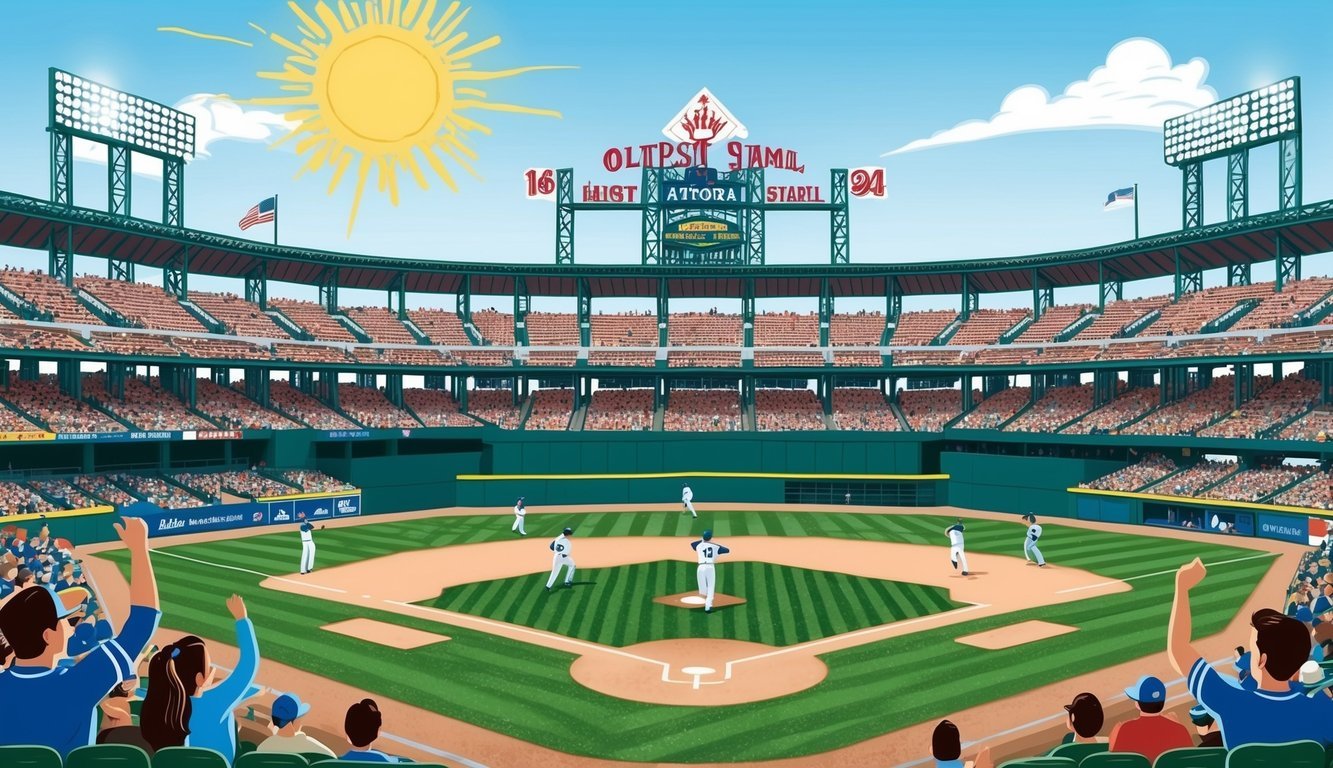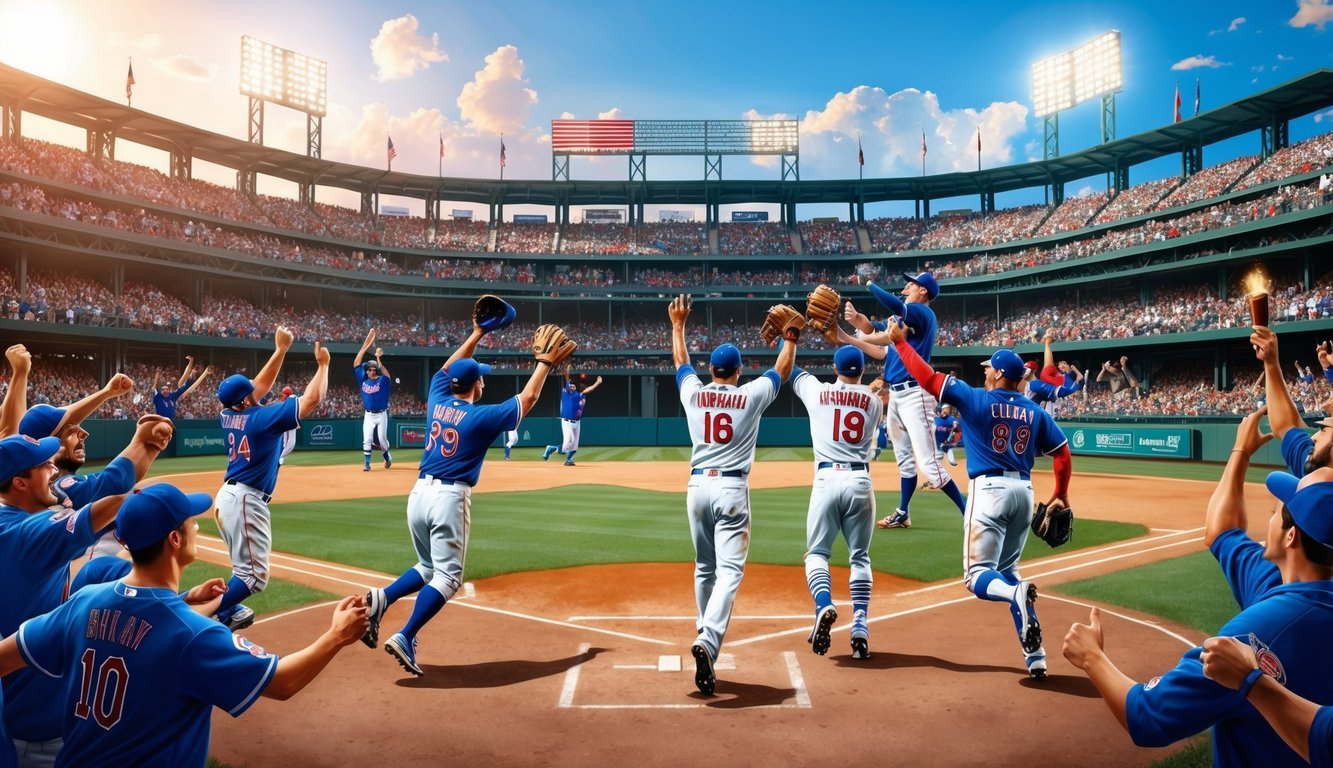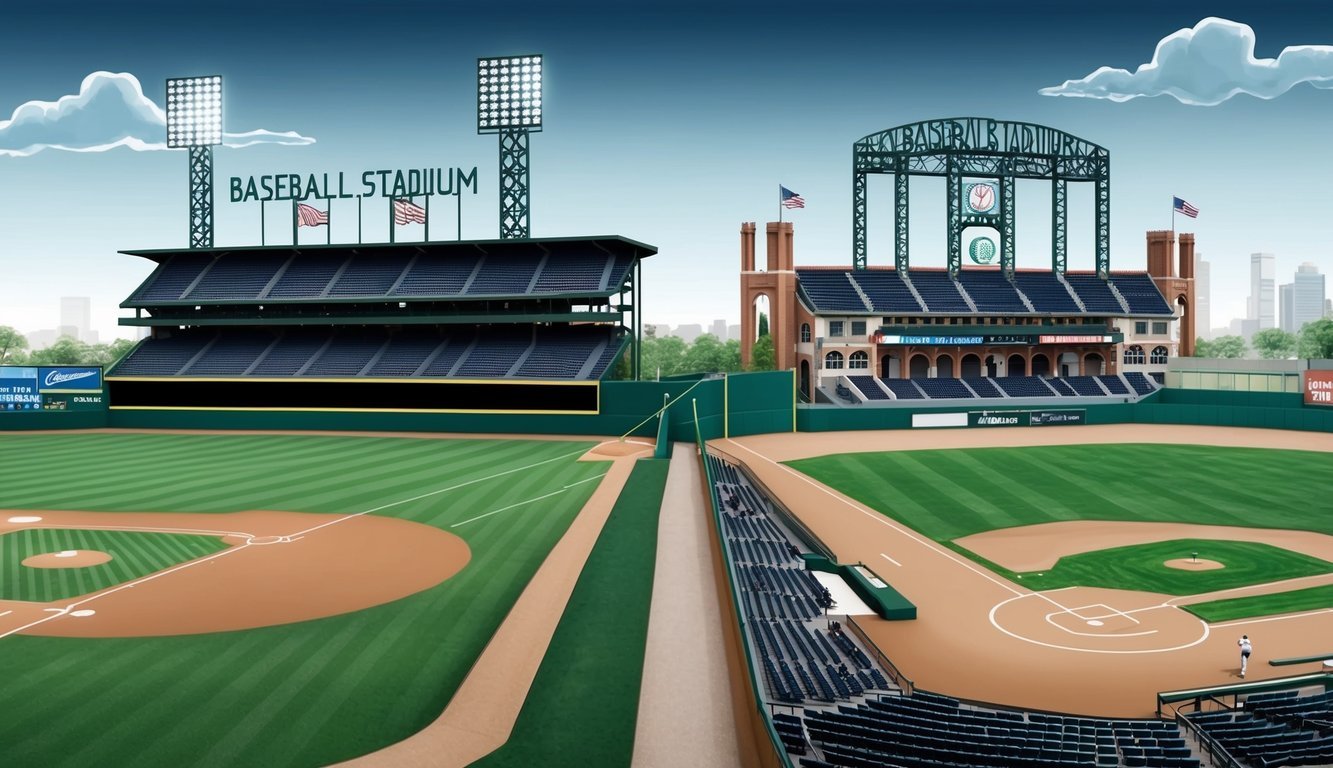Baseball fans cherish the history and nostalgia of America’s pastime, and nowhere is that more evident than in the oldest MLB stadiums still in use today.
These iconic ballparks have witnessed legendary moments and hosted some of the game’s greatest players over the decades.
Fenway Park, home of the Boston Red Sox, stands as the oldest active Major League Baseball stadium, having opened its doors in 1912. This historic venue has seen countless unforgettable games and remains a beloved symbol of baseball tradition.
Following closely behind is Wrigley Field in Chicago, which welcomed fans for the first time in 1914.
Baseball enthusiasts can step back in time when visiting these venerable stadiums.
From the Green Monster at Fenway to the ivy-covered walls of Wrigley, each ballpark offers unique features that have become integral parts of the sport’s lore.
Dodger Stadium, opened in 1962, rounds out the top three oldest MLB stadiums still in use, showcasing the enduring appeal of classic ballpark design.
Historic Origins and Significance
Baseball’s oldest stadiums are more than just sports venues – they’re living time capsules that capture the essence of America’s favorite pastime.
These historic ballparks have witnessed countless memorable moments and shaped the game’s evolution over the decades.
National Landmark Status and Preservation
Several of baseball’s oldest stadiums have achieved National Landmark status, recognizing their cultural and historical importance.
Fenway Park, home of the Boston Red Sox since 1912, earned this prestigious designation in 2012.
Its iconic Green Monster wall and manual scoreboard are beloved features that transport fans back in time.
Wrigley Field in Chicago, built in 1914, also holds National Landmark status.
The park’s ivy-covered walls and hand-operated scoreboard have become symbols of baseball tradition.
These historic ballparks require careful preservation to maintain their charm while meeting modern needs.
Efforts to preserve these stadiums often involve balancing upgrades with historical authenticity.
Renovations aim to enhance fan experiences without sacrificing the parks’ unique character.
Baseball’s Evolution alongside These Venues
As baseball evolved, so did its oldest stadiums.
These venues have adapted to changing times while maintaining their historic allure.
In the early days, players like Babe Ruth wowed crowds with towering home runs at Fenway Park and Wrigley Field.
Over the years, these parks witnessed the integration of baseball, the introduction of night games, and advancements in player safety.
They’ve been the stage for legendary performances, from no-hitters to World Series clinchers.
Today, these historic ballparks blend nostalgia with modern amenities.
Wi-Fi, improved seating, and state-of-the-art scoreboards coexist with century-old architectural features.
This mix of old and new allows fans to experience baseball history while enjoying contemporary comforts.
Iconic Stadiums and Their Stories
Baseball’s most beloved parks have shaped the sport’s history and culture.
These iconic venues blend tradition with unforgettable features, creating unique experiences for fans and players alike.
Fenway Park: The Green Monster Wall
Fenway Park, home of the Boston Red Sox since 1912, boasts one of baseball’s most recognizable features – the Green Monster.
This 37-foot-high left field wall has influenced countless games and strategies.
Its manual scoreboard, a rarity in modern stadiums, adds to Fenway’s charm.
Fenway’s intimate seating brings fans close to the action.
The park’s quirky dimensions, including the Pesky Pole in right field, challenge players and create exciting plays.
Despite renovations, Fenway retains its classic feel, making it a must-visit for baseball enthusiasts.
Wrigley Field: Beyond the Ivy
Wrigley Field, the Chicago Cubs’ home since 1916, is famous for its ivy-covered outfield walls.
This unique feature adds a touch of nature to the urban ballpark.
The iconic red marquee at the entrance welcomes fans to the “Friendly Confines.”
Wrigley’s hand-operated scoreboard and rooftop seating on neighboring buildings are quintessential parts of its character.
The stadium’s day-game tradition, though less common now, harks back to baseball’s earlier days.
Cubs fans’ loyalty through decades of heartbreak before their 2016 World Series win has become part of Wrigley’s lore.
Dodger Stadium: A West Coast Landmark
Dodger Stadium, nestled in Chavez Ravine overlooking Los Angeles, opened in 1962.
Its mid-century modern design captures the essence of Southern California.
The stadium’s palm trees and vibrant seat colors create a distinctly West Coast atmosphere.
Known for its pitcher-friendly dimensions, Dodger Stadium has hosted many memorable performances.
The park’s clear sightlines and symmetrical field layout offer a classic baseball viewing experience.
Dodger Dogs and the famous Dodger Blue have become integral parts of the stadium’s identity.
The venue’s hillside location provides stunning views of the downtown skyline and nearby mountains.
The Baseball Experience

Attending a game at an historic ballpark combines nostalgia, tradition, and modern amenities.
These venerable stadiums offer unique sightlines, charming quirks, and a connection to baseball’s rich past.
Stadium Design and Unique Features
Old ballparks often showcase distinctive architectural elements.
Fenway Park’s iconic Green Monster looms over left field, while Wrigley Field’s ivy-covered outfield walls transport fans to a bygone era.
Many historic venues feature asymmetrical outfields, adding strategic complexity to gameplay.
Some older stadiums have been modernized with retractable roofs, blending tradition with comfort.
Natural grass fields remain popular, though a few parks use artificial turf for maintenance reasons.
Seating capacity varies widely among older ballparks.
Intimate settings bring fans closer to the action, while larger stadiums accommodate more spectators.
Fan Engagement in Time-Honored Arenas
Historic stadiums foster a sense of community among fans.
Longtime traditions like singing “Take Me Out to the Ball Game” during the seventh-inning stretch create shared experiences.
Food options have expanded beyond hot dogs and peanuts.
Many parks now offer local specialties and gourmet fare alongside classic ballpark snacks.
Older multi-purpose stadiums have largely given way to baseball-specific venues.
This shift enhances sightlines and creates a more immersive atmosphere for fans.
Interactive exhibits and team museums within the ballpark allow fans to explore baseball history before and after games.
Teams and Triumphs

Historic ballparks have witnessed countless unforgettable moments and legendary players throughout Major League Baseball’s rich history.
These venerable stadiums hold special places in the hearts of fans and players alike.
From the crack of a bat to the roar of the crowd, every game played in these hallowed grounds becomes a part of the fabric of baseball’s narrative. Iconic baseball stadiums around the world, like Fenway Park and Wrigley Field, have stood the test of time, each with their own unique stories and traditions.
As the sun sets and the stadium lights flicker on, they continue to serve as a backdrop for new legacies to unfold, ensuring that the magic of baseball lives on for generations to come.
World Series Wins and Memorable Moments
Fenway Park has hosted 11 World Series, with the Boston Red Sox clinching four championships on their home turf.
The iconic Green Monster has witnessed dramatic home runs and spectacular catches.
Wrigley Field finally saw its Chicago Cubs break a 108-year drought in 2016, though the clinching game was played in Cleveland.
The stadium erupted in celebration when the team returned home.
Dodger Stadium has been the site of 10 World Series, with the Los Angeles Dodgers winning three titles there.
Kirk Gibson’s legendary home run in the 1988 Series remains etched in baseball lore.
Legendary Players and Their Home Fields
Babe Ruth called Fenway Park home during his early career with the Red Sox before his infamous trade to the Yankees.
Ted Williams, Carl Yastrzemski, and David Ortiz later became Fenway legends.
At Wrigley Field, Ernie Banks earned the nickname “Mr. Cub” while thrilling fans with his power and enthusiasm.
Ryne Sandberg and Sammy Sosa continued the tradition of Cubs greats.
Sandy Koufax and Don Drysdale dominated on the mound at Dodger Stadium in the 1960s.
Later, Fernando Valenzuela sparked “Fernandomania” and Orel Hershiser set a consecutive scoreless innings record.
These hallowed grounds have shaped the careers of countless Hall of Famers and continue to inspire new generations of baseball stars.
Stadium Evolution and Modern Adaptations

Baseball stadiums have undergone remarkable transformations over the decades, blending historic charm with cutting-edge amenities.
These changes reflect the sport’s evolution and fans’ changing expectations.
Renovations and Technological Advancements
Many iconic MLB ballparks have embraced modernization while preserving their classic appeal.
Fenway Park, for instance, added seats atop the Green Monster in 2003, enhancing viewing options without compromising its historic character.
Wrigley Field upgraded its facilities with new clubhouses and enhanced concessions, maintaining its ivy-covered walls and manual scoreboard.
Technological improvements have revolutionized the fan experience.
High-definition video boards, like the one at Kauffman Stadium, offer instant replays and interactive content.
Progressive Field pioneered mobile ordering for concessions, reducing wait times.
Wi-Fi connectivity and smartphone apps have become standard, allowing fans to engage with the game in new ways.
Continuing Legacy and Future of MLB Parks
Despite the push for modernization, many teams honor baseball’s rich history.
The Oakland Coliseum, while aging, still provides a nostalgic atmosphere.
Newer parks like Guaranteed Rate Field blend modern amenities with classic design elements.
Future MLB ballparks will likely focus on sustainability and multi-use functionality.
Retractable roofs, like at Rogers Centre, may become more common to ensure game-day reliability.
Angel Stadium’s planned renovations aim to create a year-round entertainment district, a trend other teams might follow.
As baseball evolves, so do its venues.
The challenge lies in balancing tradition with innovation, ensuring that America’s pastime remains vibrant and accessible for generations to come.
